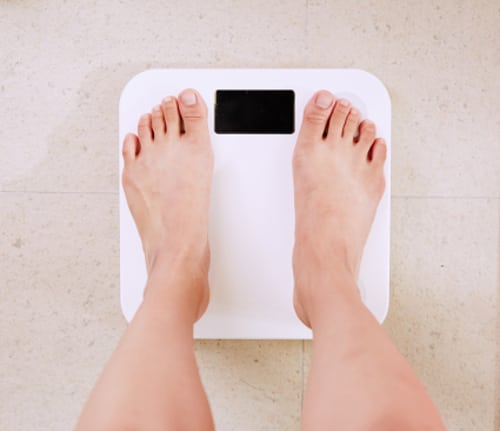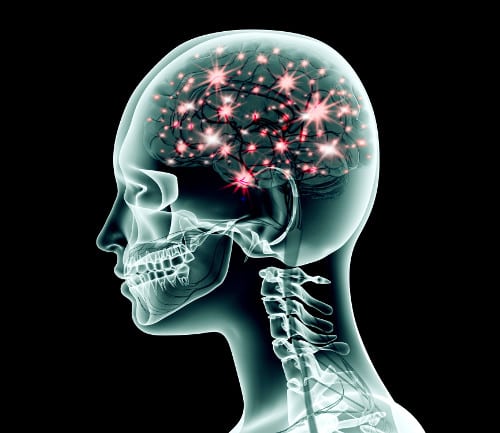Unlike our ancestors who went through periods of fasting out of necessity when food was scarce, we live in a world with an abundance of grocery stores and restaurants that provide us continuous access to food we can eat whenever we so choose. Most people today are programmed to eat three meals a day and many snack one or two times as well if not graze throughout the day.
For decades we have been taught the importance of a hearty breakfast and not skipping meals so we can keep up our strength and prevent our metabolism from slowing down. But what is the true impact on our health and waistlines of eating so frequently, often from the time we get up until right before we go to bed?
 The fact is that the body simply is not designed to run optimally when it is continuously fed. Many health experts now recommend intermittent fasting as a powerful strategy to boost the health of your body and brain as well as increase your ability to burn stored fat for fuel.
The fact is that the body simply is not designed to run optimally when it is continuously fed. Many health experts now recommend intermittent fasting as a powerful strategy to boost the health of your body and brain as well as increase your ability to burn stored fat for fuel.
Fasting is a voluntary withholding of food that allows the body to devote its energy to cleanse, repair and regenerate itself for optimal function. Rather than a diet that consists of eating particular foods, intermittent fasting is a pattern of eating that involves alternating periods of fasting with eating that takes place during a narrower window of time. The number of hours that make up the eating window can vary with the method of intermittent fasting chosen.
Benefits of Intermittent Fasting
This inexpensive and effective dietary intervention has been used therapeutically for centuries to treat conditions such as obesity, epilepsy and diabetes. It is widely recognized for its ability to accelerate fat-burning, improve functioning of hormones, cells and genes, reduce oxidative stress and inflammation, optimize brain and neurological function, relieve digestive disorders, and increase longevity by lowering risk of many common diseases such as cancer. Some of the primary benefits people experience with intermittent fasting are:
FAT LOSS AND GREATER METABOLIC HEALTH
 Studies show that intermittent fasting boosts metabolism and can be a very powerful tool to rid the body of excess body fat and break weight loss plateaus. A primary reason pounds pile on in the first place is that frequent eating keeps glucose levels elevated to the point where glycogen (stored glucose) reserves in liver and muscle cells never get depleted enough for the body to burn fat for fuel. Rather than dip into fat stores, the body finds it much easier to utilize glucose from the food it just consumed for energy production. When glucose levels remain high, insulin levels rise accordingly to handle it. What happens to the extra glucose not immediately used for energy or to replenish glycogen in liver or muscle cells? Insulin adds it to fat stores.
Studies show that intermittent fasting boosts metabolism and can be a very powerful tool to rid the body of excess body fat and break weight loss plateaus. A primary reason pounds pile on in the first place is that frequent eating keeps glucose levels elevated to the point where glycogen (stored glucose) reserves in liver and muscle cells never get depleted enough for the body to burn fat for fuel. Rather than dip into fat stores, the body finds it much easier to utilize glucose from the food it just consumed for energy production. When glucose levels remain high, insulin levels rise accordingly to handle it. What happens to the extra glucose not immediately used for energy or to replenish glycogen in liver or muscle cells? Insulin adds it to fat stores.
Intermittent fasting reduces levels of glucose and insulin, triggering the burning of stored fat for energy. Without a steady supply of glucose and glycogen to draw from, the body more readily compensates by turning to its fat stores and releasing fatty acids in the form of ketones for energy. Going without food for 13-18 hours significantly depletes glycogen stores (13 hours is sufficient if you already follow a low-carb diet and your body has adapted to burning fat as its primary fuel – see my article on “The Benefits of a Fat-Fueled Diet” for further understanding).
Timing and frequency of eating indeed make a difference when it comes to weight loss. In a study published in Cell Metabolism, two groups of mice were put on the exact same diet in terms of calories. One group had access to the food all day long while the other group was only allowed to eat during an eight-hour window of peak activity. At the conclusion of the study, the mice that ate in a restricted window of time were 40 percent leaner plus they had lower cholesterol and blood sugar.
Besides the benefit of lowered glucose and insulin levels, intermittent fasting primes the body for fat loss by:
- Boosting metabolic rate and flexibility – fasting activates the sympathetic nervous system to release more adrenaline and norepinephrine that increases the breakdown of body fat and facilitates its use for energy. While prolonged periods of solid fasting (in excess of 72 hours) can slow metabolism, studies show a rise in metabolic rate with short fasts. Intermittent fasting also promotes the development of metabolic flexibility whereby the body can easily switch from burning glucose for fuel to burning fat.
- Increasing levels of growth hormone – a fasted state increases the release of growth hormone, a powerful anti-aging hormone that facilitates fat-burning and boosts metabolism by helping build and preserve lean muscle mass.
- Decreasing total caloric intake – while the type of calorie rather than amount matters most to health, a decrease in total calories does play a role in weight loss. Intermittent fasting not only helps the body burn calories more effectively but not eating for longer amounts of time results in consuming fewer overall calories as well.
- Normalizing appetite hormones – intermittent fasting helps to normalize hormones involved in regulating feelings of hunger and fullness such as ghrelin (the hunger hormone), leptin, and insulin, making it easier to eat less often. Sugar and food cravings also typically decrease when blood glucose levels are balanced and insulin levels are low.
IMPROVED INSULIN SENSITIVITY

Due to heavy reliance upon carbohydrates in the average diet, metabolic disorders such as insulin resistance and diabetes have greatly increased over the last many decades. By lowering perpetually high insulin levels, intermittent fasting works to reverse insulin resistance that causes cell receptors to lose sensitivity and tune insulin out over time. Lower blood sugar levels mean that less insulin is required to move glucose into cells. As insulin levels remain low, cell receptors are able to heal and insulin sensitivity is restored. The body can then more efficiently use the food it consumes for energy instead of converting it to body fat. According to the Journal of Laboratory and Clinical Medicine, human studies on intermittent fasting have shown a 3-6 percent reduction in fasting blood sugar and a 20-31 percent reduction in fasting insulin levels.
CELLULAR HEALTH AND INCREASED LONGEVITY
The more energy the body uses for digestion, the less energy it has for healing and repair. Eating and digesting food not only depletes energy but also increases free radical production. Fasting helps to reduce the accumulation of free radicals in cells and lowers resulting oxidative stress and inflammation in the process. It also helps to protect cellular proteins, lipids and DNA from damage associated with aging and chronic diseases like cancer and Alzheimer’s.
The primary way fasting produces these benefits is by triggering autophagy, a process that works to remove cellular waste and debris that builds up over time. Besides “cleaning house”, autophagy recycles dysfunctional proteins and other cellular components. It also serves to shift stem cells from a dormant state to a state of renewal, increasing their ability to regenerate healthier cells to better maintain and repair tissues and fuel essential bodily processes. As part of the innate immune system, autophagy works as well to identify viral cell invaders. Benefits associated with increased autophagy are primarily experienced during longer fasting cycles of 16 or more hours that work to trigger ketone production.
Fasting is also known to favorably modify certain biological pathways that impact lifespan similar to the practice of calorie restriction proven in studies to increase longevity. By enabling cells to detox and recycle, periodic fasting helps to slow down aging and even prevent age-related diseases. Studies done with animals conducted by the National Institute on Aging suggest that animals age more slowly and live longer when they consume fewer calories. One study conducted with rats on the effect of calorie restriction on lifespan found that the rats who fasted every other day lived 84 percent longer than rats that did not fast at all.
BRAIN AND NEUROLOGICAL HEALTH
 Intermittent fasting provides a number of benefits that boost brain function while reducing the risk of cognitive decline and neurological conditions associated with aging. A major way it does so is by triggering the production of ketones that are easily able to cross the blood-brain barrier in order to better fuel the brain for enhanced mental acuity, memory and focus.
Intermittent fasting provides a number of benefits that boost brain function while reducing the risk of cognitive decline and neurological conditions associated with aging. A major way it does so is by triggering the production of ketones that are easily able to cross the blood-brain barrier in order to better fuel the brain for enhanced mental acuity, memory and focus.
Another primary benefit of fasting on brain health is its ability to repair and regenerate neurons (nerve cells in the brain). Going without food for a period of time specifically increases a protein known as “brain derived neurotrophic factor” (BDNF). Studies show that BDNF stimulates the creation of new brain cells in parts of the brain involved in learning, memory and cognitive function while releasing chemicals that protect against harmful changes associated with neurological diseases such as Alzheimer’s and Parkinson’s disease.
Lowering glucose and insulin levels from reduced carbohydrate intake further helps to improve brain health by reducing oxidative stress and inflammation that adversely affects brain cells and contributes to the development of dementia, Alzheimer’s and other neurological conditions. One of the dysfunctional proteins that autophagy helps to break down and remove is beta-amyloid. Strongly implicated in the development of Alzheimer’s disease, beta-amyloid is a protein fragment that destroys synapses between neurons before it clumps into plaques that eventually lead to nerve cell death.
CANCER PREVENTION AND THERAPY
Taking regular breaks from food helps lower the risk of cancer by reducing hormones believed to promote its growth such as IGF-1 (insulin-like growth factor). IGF-1 acts on the pituitary gland to induce cell growth and replication. Intermittent fasting also helps prevent or reverse the spread of cancer by limiting carbohydrate intake, depriving cancer cells of the energy they derive from glucose and lactic acid. In simple terms, cancer cells feed on sugar and will die if their food supply is removed. Combining intermittent fasting with a state of nutritional ketosis is particularly effective in preventing and reversing cancer as cancer cells lack the metabolic flexibility to use ketones for its energy needs as normal cells are able to do.
STRONGER IMMUNE SYSTEM
When we eat food, the immune system gets activated to increase the release of inflammatory molecules to attack any unwanted pathogens, bacteria or reactive food molecules or allergens ingested with the food. Fasting gives the immune system a break from a constant stream of food antigens and pathogens. This helps to reduce the amount of inflammatory molecules released and frees up white blood cells to focus on other more serious threats.
As the body attempts to conserve energy in the absence of food (especially with longer fasts), it is known to recycle inactive or damaged immune cells and triggers dormant stem cells to begin regenerating new white blood cells. This essentially works to rebuild the immune system and make it stronger. In addition, studies conducted with cycles of fasting have shown it can work to protect against damage to the immune system that occurs as a side effect of chemotherapy.
BETTER GUT HEALTH
Giving the digestive system a break from processing food facilitates the regeneration of the lining of the gut that often becomes porous and damaged from inflammatory reactions (i.e. “leaky gut syndrome”). Plus refraining from eating and drinking plenty of water and other fluids helps flush out the digestive system, naturally reducing the number of microorganisms in the gut.
 Note: The many benefits of intermittent fasting may be lessened or negated if food consumed during the eating window is of poor quality, i.e. high in refined or processed foods, sugar, grains, conventionally produced meats or processed oils and fats. However, combining the practice of intermittent fasting with a cyclical ketogenic diet that is high in healthy fats and non-starchy vegetables with moderate amounts of protein from quality sources will heighten its benefits as well as improve your overall health. Intermittent fasting is also far easier to do when your body has become “fat-adapted” and can easily derive its energy from ketones. For more information on nutritional ketosis, see my article “The Benefits of a Fat-Fueled Diet”.
Note: The many benefits of intermittent fasting may be lessened or negated if food consumed during the eating window is of poor quality, i.e. high in refined or processed foods, sugar, grains, conventionally produced meats or processed oils and fats. However, combining the practice of intermittent fasting with a cyclical ketogenic diet that is high in healthy fats and non-starchy vegetables with moderate amounts of protein from quality sources will heighten its benefits as well as improve your overall health. Intermittent fasting is also far easier to do when your body has become “fat-adapted” and can easily derive its energy from ketones. For more information on nutritional ketosis, see my article “The Benefits of a Fat-Fueled Diet”.
Where to Begin with Intermittent Fasting
There are many ways to practice intermittent fasting. The most important thing is to start slowly to allow time for your body to adapt to new patterns of eating. You do not want to go from eating four or more times a day to fasting for 16 hours. You also might want to at first try extending fasting hours two to three times a week and then increase fasting frequency over time as your body adjusts. It is also important to make sure that you consume a sufficient amount of healthy calories during your eating window.
The level of difficulty and length of the adjustment period depends on your starting point. If you currently eat five or six times a day and your carbohydrate intake is high (i.e. you regularly consume sugar, grains, and starchy vegetables like potatoes, rice or pasta), then you are a “sugar-burner” versus a “fat-burner” and will likely experience more hunger, cravings and other “withdrawal” symptoms when you go longer without food. If you already eat a low carb diet and your body is adapted to burning fat as its primary fuel, then the transition to longer periods without eating will take less time and be much easier with little to no unpleasant symptoms. If you are in the first category, you may want to take a week or two to cut out the sugar, reduce your overall carbohydrate intake and, most importantly, include lots of healthy fats in addition to moderate amounts of quality protein as these measures will make the transition far less difficult and improve your health at the same time.
An Intermittent Fast Everyone Can Do
I would recommend staring with the “Simple Fast” as it is the shortest duration of any of the types of intermittent fasting. It is simply a 12/12-hour plan where you eat during a 12-hour window and fast the remaining 12 hours. The fast is most beneficial if you begin after your dinner meal and break your fast the next morning around the same time you finished your meal the night before. Since a good portion of the 12 fasting hours are spent sleeping, the plan does not involve that much willpower as you only need to discipline yourself to not eat after your evening meal. This type of fast is safe and highly recommended for everyone to practice due to the health benefits it affords, especially when you consume your dinner meal before 7:00 p.m. (the earlier, the better).
| WHY EVERYONE SHOULD AVOID EATING 3 OR MORE HOURS BEFORE BED |
|---|
| Eating food less than three hours before bedtime is an unhealthy practice for a number of reasons. The primary reason is that the body is designed to burn calories during the day and work on vital processes involving cleansing, detoxification, replenishing immune cells, repair and rejuvenation at night in the deeper cycles of sleep that primarily take place during the first part of the night.
Since the breakdown and processing of food takes at least four hours, nighttime eating causes the body to divert its energy to that process instead of what should occur during sleep to promote a healthy body and brain. According to Alejandro Junger, a medical doctor who authored the book “Clean” and “The Clean Program” practiced worldwide, the body sends the signal to go into deep detox mode approximately eight hours after your last meal and another four hours are needed to do a “deep clean”. Hence the need for a 12-hour window. Just going to bed later will not help as the stages of sleep in which these processes were designed to occur are aligned with the body’s biological clock and circadian rhythm governed by times of daylight and darkness. The window of healing and detox mode closes once the sun begins to rise. Disrupting the body’s circadian rhythm adversely affects metabolism. The fact is that daytime calories are burned while nighttime calories tend to be stored. This is because metabolic rate and digestive system function are faster and more efficient in the morning and afternoon to coincide with a greater level of activity. Since little energy is needed during sleep, calories consumed in the evening are not burned for fuel but instead are used to replenish glycogen stores or are stored as fat. The body is then unable to burn fat and use ketones for overnight fuel. Replenishing glycogen stores in the hours right before going to bed sabotages fat-burning. Having your blood sugar spike during the night from eating carbohydrates too close to bedtime can also interfere with sleep (your cells do not need a sugar rush at 1 a.m.!) as well as throw hormones involved in hunger and appetite off kilter. This makes you more prone to cravings and out-of-control appetite. By elevating insulin levels and suppressing ghrelin (the hunger hormone), eating before bed inhibits the release of growth hormone so vital for cellular repair, muscle building, bone health and an efficient metabolism. |
Other Types of Intermittent Fasting Methods
 In addition to the simple “12/12-Hour” intermittent fasting plan, there are a number of other methods, some that involve “time-restricted” plans and others that are more “cyclical” in nature. It is fine to consume water, black coffee, herbal or other teas and other non-caloric beverages during the fasting hours with these plans to help reduce hunger levels. Some fasting advocates allow for the use of bone broth or diluted green juices to provide some nutrients and electrolytes.
In addition to the simple “12/12-Hour” intermittent fasting plan, there are a number of other methods, some that involve “time-restricted” plans and others that are more “cyclical” in nature. It is fine to consume water, black coffee, herbal or other teas and other non-caloric beverages during the fasting hours with these plans to help reduce hunger levels. Some fasting advocates allow for the use of bone broth or diluted green juices to provide some nutrients and electrolytes.
- 16/8 FAST – this very popular intermittent fasting method involves fasting every day for 16 hours and then eating 2-3 meals or snacks within the following 8-hour window (women may want to reduce the fasting window to 14-15 hours – see explanation below). A simple way to do this type of intermittent fasting is to not eat anything after dinner and skip breakfast the next day, having your first meal anywhere from 10 a.m. to 1 p.m. based on what time you ate dinner the night before. During the 8-hour window, it is advisable to eat at least two meals consisting of healthy foods.
- STRONG FAST – involves fasting 16-18 hours on a daily basis (recommended for those who are use to a ketogenic lifestyle and who have intermittent fasting experience).
- WARRIOR FAST – the most advanced intermittent fasting strategy that extends the fasting window to 19-21 hours per day. The “Warrior fast” may be conducted as a “fat” fast whereby some fat (but only fat) is consumed during the fasting hours.
- 24-HOUR FAST – involves skipping two meals to take off a full 24 hours from eating. Example: eat dinner at 6:00 p.m. Skip breakfast and lunch the next day and resume eating with the dinner meal at 6:00 p.m. the next day.
- 36-HOUR FAST – involves fasting three meals over two days. You would eat dinner on day one, fast all day on day two and then break the fast the next morning on day three – you would be fasting overnight for two nights.
- ALTERNATE-24 HOUR DAY FAST – this intermittent fasting method consists of alternating between fasting days and non-fasting days. You basically fast every other day. While some people eat nothing on the fasting days, a modified version allows you to have one very small meal on the fasting day (generally 500-600 calories). Clinical studies have shown this method to result in meaningful weight loss in obese individuals.
- 5/2 FAST – this intermittent fasting method involves eating normally for five days and eating about 25 percent of your normal calorie intake consumed in two small meals the other two days (generally 500-600 calories depending on whether you are a woman or man).
- CYCLE FAST – this fasting method involves doing a “16/8 Hour” fast three non-consecutive days a week.
- PERIODIC FASTING – consists of occasional whole day fasts, separated by days or weeks of normal eating. While exact definitions vary, programs involving fasting for one or more days every 1–4 weeks are often considered as periodic fasting.
- FAT FAST – this type of fast is used to help support ketosis and energy levels during a time of extended fasting (such as the “Warrior Fast”). It can also be used to accelerate the production of ketones and fat adaptation or to break a weight loss plateau. Rather than consuming a meal that contains protein, carbs and fats, you consume something that only contains healthy fats since carbs and proteins are the only macronutrients that activate insulin, leptin, IGF-1 and other hormones or pathways that may have adverse effects. If you use this fast for more than a day or two, it is advisable to take supplements and a very low carb “greens” powder to compensate for vitamins and minerals you are missing.
Is Intermittent Fasting Recommended for Everyone?
There are groups of people who should not practice intermittent fasting to any significant degree. These would include women who are pregnant or nursing, children under 18, people with a history of eating disorders or who are prone to hypoglycemic episodes and those with medical conditions that require taking medication with food three or more times a day. If you have a severe or chronic health condition, you should talk with your doctor before deciding on a fasting plan that is safe for you. Because going without food for a longer period of time can trigger your body’s stress response, people who are already dealing with chronic stress such as long work hours, sleep deprivation, an illness or severe emotional upheaval would be well-advised to delay practicing more intense forms of intermittent fasting until such issues are no longer prevalent.
Special Concerns for Women
Since a woman’s body was designed to bear children, they tend to respond differently than men to intermittent fasting. Women are particularly sensitive to calorie deprivation and experience greater activation of the sympathetic nervous system (the stress response of the body) in response to nutritional stressors. If not done correctly, intermittent fasting for prolonged periods of time can throw hormones out-of-whack in non-menopausal women especially if bingeing occurs following times of under-eating.
The weight-loss benefits of intermittent fasting could also be reduced due to increased production of hunger hormones like leptin and ghrelin that occur with a greater sensitivity to “starvation” signals during times of under-eating. That being said, experts indicate that there is little to no differences between men and women when it comes to the many therapeutic benefits of intermittent fasting pertaining to cellular health, anti-aging, cognitive function, disease prevention, etc.

The best way for women to experience the benefits of intermittent fasting and avoid the drawbacks they are prone to is to start slowly and choose a modified type of plan. Rather than a 16-hour fast followed by 8 hours of eating, a woman may be better off with a 14/10-hour intermittent fasting schedule. It would also be best, especially when first beginning, to engage in a cyclical type fasting method that only requires that you fast for a few non-consecutive days a week instead of every day. Begin by fasting 12 hours and work up to 14-16 hours as your body adjusts. If you are a woman, your body will be able to more easily adapt to fasting when you take a less rigorous approach.
Conclusion
If you struggle to lose weight or experience any health challenges referred to in this article, I would encourage you to experiment with the practice of intermittent fasting. There are countless resources online that can provide you with further information. Dr. Jockers.com is one such website that contains a number of well-done informational articles and also video clips that can help you to learn more about its benefits and the “how-to’s” of putting it into practice.
Article Written by: Lucinda Bedogne, CNHP, CNC







